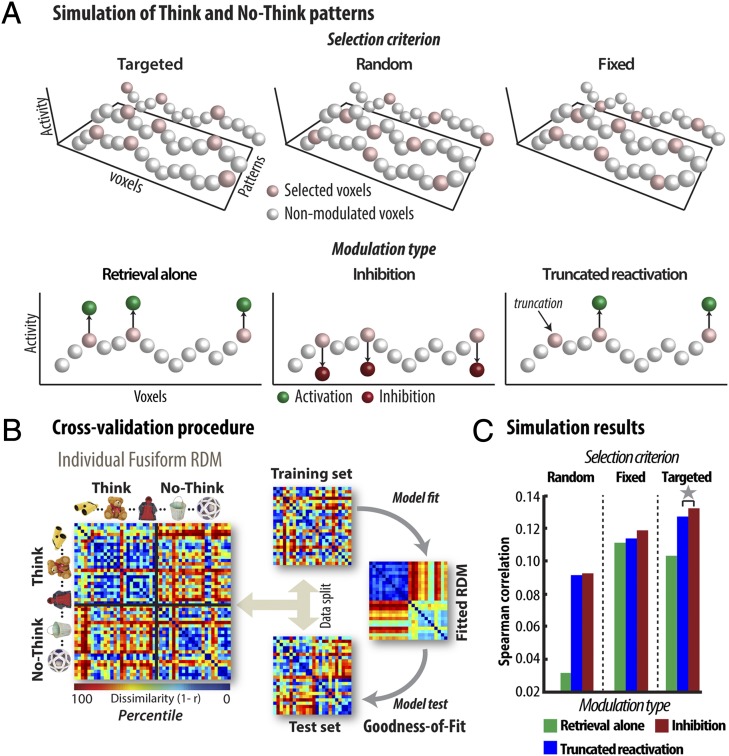Fig. 5.
Simulation of the neocortical activity pattern during the TNT phase. (A) Simulation modeling. Initial activation patterns reflect a memory’s emerging activity, given its cue (white and pink spheres). White spheres are voxels not modulated by retrieval or suppression. Pink spheres are voxels selected and modulated by retrieval or suppression. The green and the red spheres correspond to the activity level of voxels modulated for think and no-think patterns, respectively, according to modulation type (retrieval alone, inhibition, and truncated reactivation). A targeted model modulates the initially most active voxels in response to reminders; random and fixed models modulate a randomly selected set of voxels, with the former modulating a different set for each pattern, and latter, a consistent set across patterns. Memory control was either absent (retrieval alone mechanism in which no-think items were not modulated) or was implemented by inhibition (down-scaling of activity), or truncated reactivation (activation for some voxels is stopped but not inhibited). Applying combinations of these voxel selection rules and modulation mechanisms to the simulated fusiform cortex allowed us to generate predicted activation data that could be tested against real fusiform data, via a cross-validation procedure (B). (B) To evaluate each model, we computed each participant’s RDM for their left fusiform cortex (e.g., Left, displayed here as the rank-ordered RDM of a single participant). In this RDM, each small square represents the dissimilarity (1 − correlation) between the activity patterns across all of the fusiform voxels for two objects that were either recalled (think) or suppressed (no-think). We then randomly split this data into a training set and a test set. We used the training set to estimate the parameters of a given model, applying these parameters to generate a predicted RDM used to test the model against the RDM for the test set (see Targeted Nature of the Inhibition, SI Simulation Methods, and Fig. S4). (C) Simulation outcomes. Each model’s GOF averaged across participants (see Targeted Nature of the Inhibition, SI Simulation Methods, and Fig. S4). These findings show that the pattern of representational similarity in the fusiform gyrus during the think/no-think task is best predicted by a model that posits inhibition, and, in particular, targeted inhibition of a pattern’s most active voxels. Gray star illustrates significant difference at 95% confidence interval level tested by bootstrapping.

